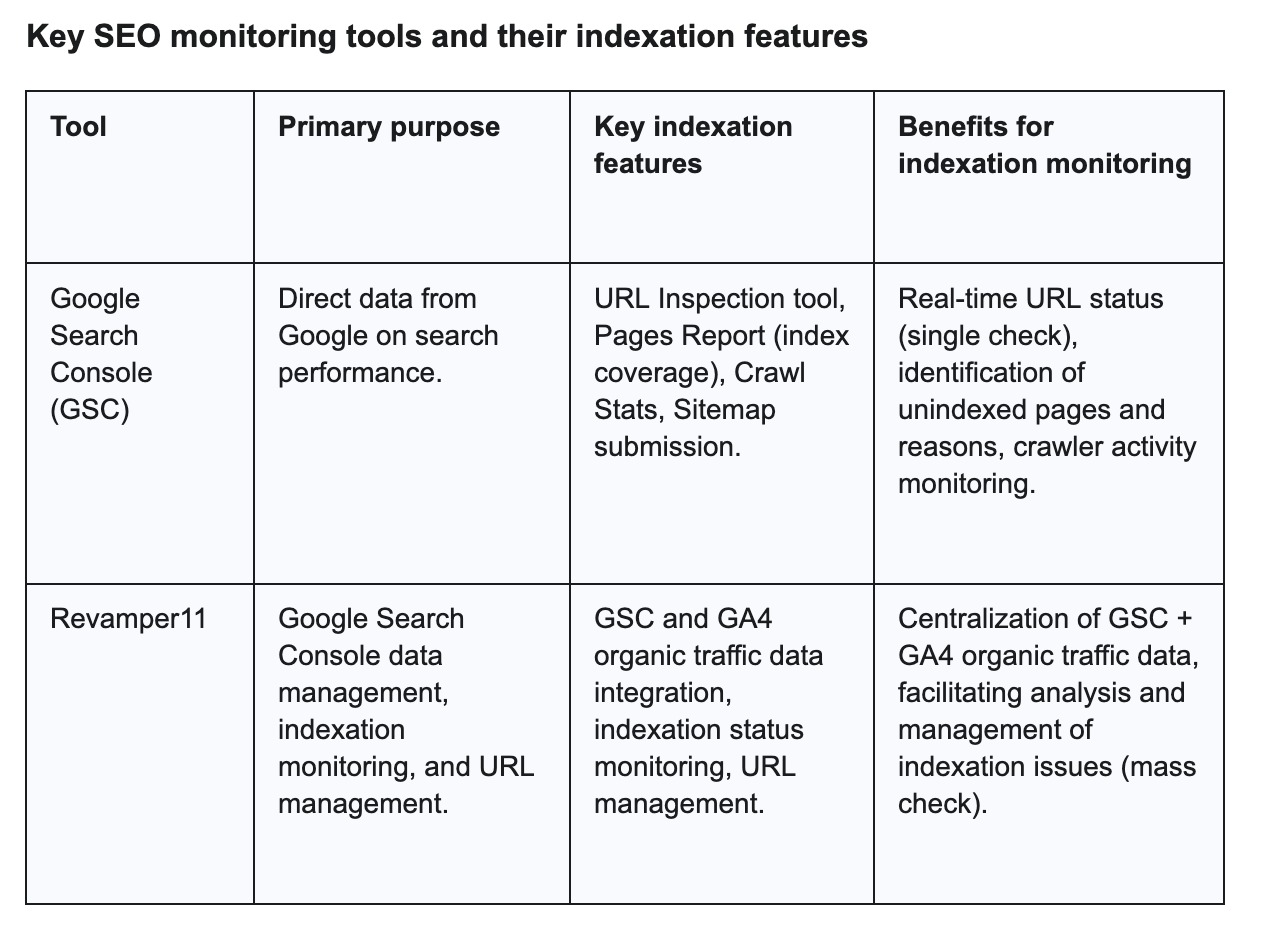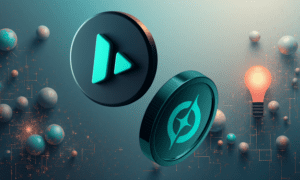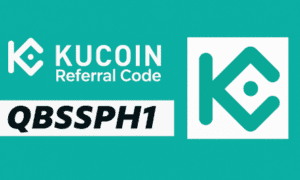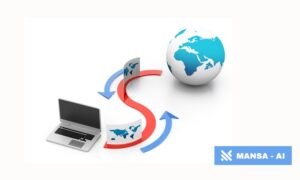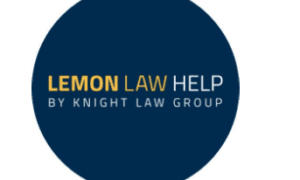Indexation is a fundamental process by which search engines like Google organize and store information from billions of web pages. This creates a searchable catalog that enables the rapid delivery of relevant results in response to user queries. Without proper indexation, even the most valuable and optimized content remains invisible to search engines, and consequently, to users. It is, therefore, the primary gateway to organic visibility.
The invisible foundation of SEO Success
Many SEO specialists focus their efforts on content creation, keyword optimization, or link building. However, these actions become futile if pages are not indexed. Indexation issues can subtly cripple organic performance, leading to lost traffic, missed opportunities, and diminished online presence. Regardless of content quality or backlink strength, if a page is not indexed, it remains invisible to search engines and, by extension, to potential users. This can be compared to an invisible barrier separating all SEO efforts from actual organic visibility. Indexation monitoring is thus crucial to ensure that all optimization investments translate into real traffic. Proactive monitoring is no longer just a good practice – it has become an indispensable element of modern SEO strategy.
The gateway to visibility
The Crawl-Index-Rank cycle is a sequence of actions that search engines perform to discover, process, and store content, and then present it to users.
The crawling, indexing, and ranking process
- Crawling. Search engines send out bots, known as crawlers or spiders, that explore the internet, following links and discovering new or updated pages. During this process, they download all page content, including text, images, and other media.
- Indexing. After crawling is complete, the collected information is processed and stored in a massive database known as an “inverted index.” This catalog links keywords, phrases, entities, and other content-related data to specific web pages, enabling their rapid retrieval. Indexation transforms a chaotic collection of web pages into a highly organized, searchable library. Without proper cataloging (indexing), a page is like a book without a catalog number—it exists, but no one can find it on the shelves. This underscores the fundamental role of indexation in ensuring searchability.
- Ranking. Once indexed, search engines use complex algorithms (considering factors such as keywords, site speed, mobile responsiveness, user engagement, and authority) to match indexed content to user queries and determine its relevance and position in search results (SERPs). This is where usually most effort of digital marketers and specialists is focused on what often results in missing on essentials – indexing part of process.
Why indexation monitoring is essential for SEO specialists
Indexation monitoring is a critical component of any effective SEO strategy, offering a range of benefits that translate into improved visibility and site performance. If a page is not indexed, it cannot appear in search results, which directly leads to a loss of potential organic traffic. Monitoring “indexed pages” is a key indicator of SEO effectiveness and confirms whether efforts are contributing to building long-term visibility.
Consistent SEO tracking allows for the rapid detection of sudden drops in rankings or traffic, which often signal technical errors, content degradation, or algorithm updates. This helps identify issues such as decreased backlinks, lower content relevance, or competitor updates that can impact indexation and ranking. Indexation monitoring serves as an early warning system for algorithm changes. A sudden, unexplained drop in the number of indexed pages or a change in how certain content types are indexed can be a strong signal of an algorithm update or a shift in Google’s content quality assessment, prompting proactive strategy adjustments rather than reactive scrambling. Monitoring “indexed pages” also helps verify the technical strength.
By ensuring content indexation and promptly resolving issues, the capital (time, effort, money) invested in content creation, link building, and technical optimization is protected and can generate returns. Without it, these investments risk yielding no results at all. In other words indexation monitoring is kind of insurance – in this case – traffic insurance, which is harder and harder to deliver so it’s logical that it should be more and more protected.
Essential tools for effective indexation monitoring
Indexation issues can stem from various sources, from technical blocks to content quality and site structure problems. Monitoring is crucial for their early detection. Many indexation issues are “silent killers” because they don’t necessarily disrupt the user experience but fundamentally prevent search engines from processing the site. A user might still access the page, but if it’s blocked by robots.txt or stuck in a redirect loop for the crawler, it’s dead in search results. This highlights the need for specialized monitoring beyond basic website functionality checks. Effective indexation monitoring requires the use of appropriate tools, both those offered by Google and third-party solutions.
Google Search Console (GSC) is an indispensable, free tool provided by Google that offers a wealth of data and functionalities crucial for monitoring your website’s performance in Google Search results. It acts as a direct line of communication with Google, providing insights into how the search engine sees your site and helping you identify and resolve issues that could impact your visibility. GSC offers several key reports and tools that are vital for effective indexation monitoring and overall SEO health.
- The URL Inspection tool. Provides real-time information about the indexed version of a specific page, enabling checks for indexability, requests for crawling, and troubleshooting of missing pages. However it works in one by one checking mode, so it’s very time-consuming to use.
- The Pages report (formerly the Index Coverage Report). Reveals which pages are indexed, which are not, and the reasons behind it, such as being blocked by a noindex tag, crawled but not indexed, or a crawl anomaly. However users don’t have any control in selecting which URLs are monitored for indexation check.
- The Crawl Stats report. Monitors Googlebot’s activity on the site, assisting in identifying if crawl budget is a concern.
- The Performance report. Links indexation with actual clicks, impressions, click-through rate (CTR), and queries, offering detailed organic traffic data.
- Sitemap submission. Allows for the direct provision of XML sitemaps, giving Google clear instructions on which pages to index.
While GSC is a primary tool, third-party tools offer advanced features for comprehensive indexation tracking, site audits, and competitor analysis. Tools like Revamper11 are designed to help SEO specialists manage Google Search Console data, including indexation monitoring and URL management, providing a centralized platform for deeper analysis and action.
GSC offers an authoritative “source of truth” directly from Google, essential for understanding indexation from the search engine’s perspective. Third-party tools, such as Revamper11, on the other hand, provide broader, more automated, and comparative information, often integrating data from multiple sources and offering competitor analysis. The optimal strategy involves using GSC for direct diagnostics and third-party tools for scaling and strategic benchmarking. It’s not an “either-or” choice, but a synergistic and supplementary approach.
For deeper insights into GSC capabilities and advanced SEO topics in general, specialists often consult resources like Blog Search Console.
The table below outlines key SEO monitoring tools and their indexation-related features.
Consistent indexation monitoring forms the bedrock of a successful SEO strategy. It ensures visibility, protects against unforeseen issues, provides data for decision-making, and fosters adaptability in the ever-changing search landscape. It is the compass that guides digital strategy, ensuring that efforts translate into tangible results.
Indexation monitoring should be treated not as a chore, but as a continuous, strategic imperative. Leveraging tools like GSC and Revamper11 and specialized third-party platforms provides unparalleled insights into website health and performance. By prioritizing indexation, you lay the groundwork for sustained organic growth and solidify your position in the competitive digital arena.


